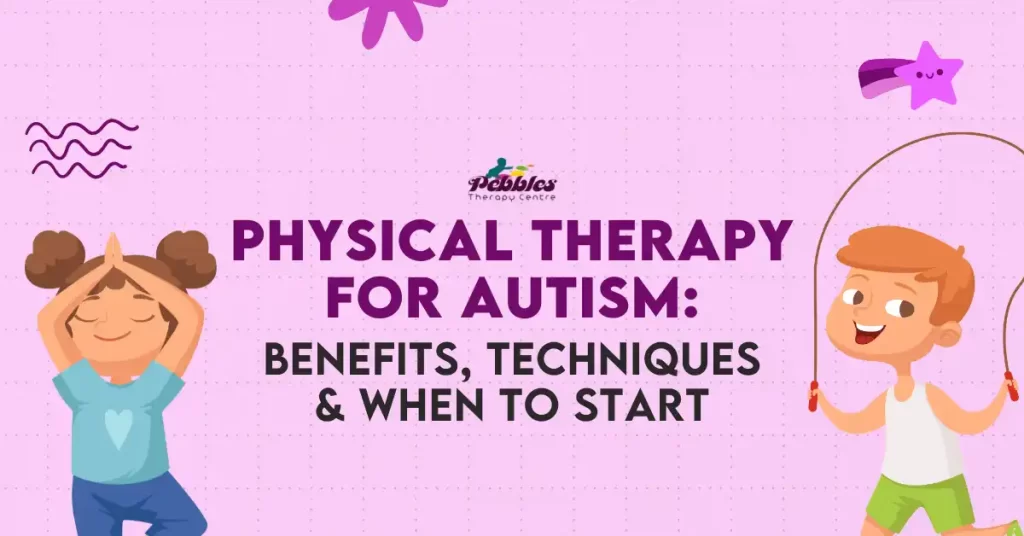Physical Therapy for Autism: Benefits, Techniques & When to Start
Autism Spectrum Disorder (ASD) is a growth issue that changes how people talk behave, and interact with each other. Besides these problems, lots of children with autism have trouble with body and movement skills that can change their daily lives. To help with these matters physical therapy for autism gives a focused way to assist children improve their movement abilities, teamwork, and general physical skills!
In this blog post we will explore the benefits of physical therapy for autism the methods used and when is the best time to start these helps. Whether you are parent͏ caregiver or teacher knowing about the part of pediatric physical therapy can help you support children with ASD better.
What is Autism Spectrum Disorder (ASD)?
Autism spectrum disorder (ASD) is a multi-factorial developmental disorder that manifests as social skills deficits, language/verbal problems and perseveration. It͏ is called a “spectrum” issue since it touches people differently, from minor to strong signs. While the main focus of autism often sits on actions ͏and social troubles many children with autism also face motor control difficulties and physical differences. These can be slow times in big or small movements, poor balance, and trouble with coordination. Getting these body problems is key for trying good ways like physical therapy for autism spectrum disorder.
Common Motor/Physical Challenges in Children with Autism
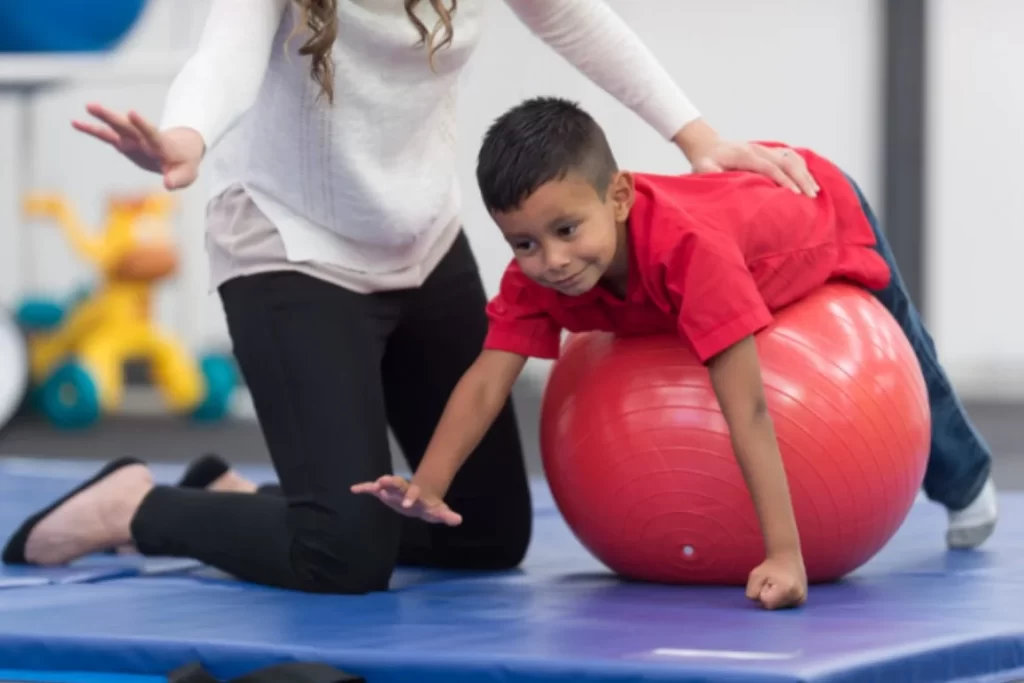
Children with autism often face unique physical and motor challenges that can affect their daily functioning. Here are some typical problems:
- Poor Balance and Coordination: Many children with ASD cannot perform tasks in need of balance, such riding a bicycle or walk on rough terrain.
- Slower gross motor abilities: underdeveloped muscles can make running, jumping, or climbing challenging.
- Deficiency in fine motor skills: writing, fastening garments, or using utensils can be difficult.
- Low Muscle Tone: Hypotonia present in some autistic children compromises their endurance and strength.
- Problems in Sensory Processing: Under or overt sensitivity to sensory impulses may affect motor planning and coordination.
Physical therapy interventions targeting these challenges will significantly improve the quality of life for a child. These are areas where therapists can improve independence and confidence for children with autism in physical strength.
How Does Pediatric Physical Therapy for Autism Help Children with ASD?
Children with autism spectrum disorder really need pediatric physical therapy. It is about improving their motor competence, increasing their physical strength, and addressing sensory integration issues.
Physical therapists create cool exercises and activities to help these kids get past struggles with motor control difficulties and hit big growth milestones.
Take physical therapy for autism, for instance. It can give a kid’s walking, balance, and being in sync a boost. This makes everyday stuff less of a hassle for them. Plus, therapists got these sensory integration techniques they use to make kids handle what they feel and hear like champs helping them chill out and stay sharp. Mixing up work on both the body and senses, physiotherapy for autism gives a complete game plan to help children with ASD.
Autism Spectrum Disorder and Motor Development
Kids grow in lots of ways, and learning how to move and control their bodies is super important. But, you see, children with autism sometimes don’t pick up these skills as fast as others. Here’s how it might look:
- Gross Motor Delays: They may struggle with stuff like racing around, hopping, or chucking a ball.
- Fine Motor Delays: They find it hard to do things that need steady hands, like scribbling down their name or cutting paper.
- Motor Planning Issues: They get mixed up trying to figure out and make the right moves, which some folks call dyspraxia.
Studies indicate that starting physical therapy for autism spectrum disorder can boost motor skills. Therapists work to overcome these challenges aiding kids in laying down solid groundwork for both physical and mental growth. This kind of advancement boosts their chances to join in social and school-related stuff promoting their all-around development.
Benefits of Physical Therapy for Children with Autism
Beyond physical development, Physical therapy for autism provides many advantages. Physical therapy for autism can be helpful in several ways:
- Increased Motor Skills: Learning fine and gross motor skills helps kids to efficiently perform daily chores.
- Improved coordination and balance: It reduces a child’s risk of falling and lets them play sports.
- Superior Strength and an Increased Strength: These will enhance muscle volume and endurance, thereby boosting general physical fitness.
- Better Sensory Integration: This aids a kid in sensory information processing, therefore reducing overstimulation and enhancing focus.
- Greater confidence and autonomy: Children that attempt new tasks, achieve goals, and identify themselves in growing selfworth.
The physical therapy for children with autism via these means helps to develop the social wellbeing of the child first along with his emotional skills.
Types of Physical Therapy Interventions for Autism
Physical therapists design several types of physical therapy interventions for specific sensory challenges to children with autism spectrum disorder. The following are some of the basic interventions:
- Balance and coordination training improves stability and movement control.
- Core strengthening exercises develop the muscles for postural support and mobility.
- In sensory integration therapy, the child learns how to cope with and make sense of sensory input.
- Gait training improves the walking pattern and mobility.
- Hydrotherapy is exercise in water with important strengthening effects and reduced sensory sensitivities.
- Play-based therapy uses fun activities for functional movement development.
Each intervention is directed towards the unique need of the child for a better outcome.
Physical Therapy Techniques and Approaches for Autism
Certain autism spectrum children exhibit strength, balance, and motor coordination impairments. The treatment of autism involves structured interventions that aim to improve these abilities and increase general movement. The physical therapy methods depend on what the child needs. The indicated methods thoroughly aid in greatly improving self-reliance and self confidence within daily activities. Those methods also extensively help develop multiple physical capabilities.
Below are some of the best physical therapy methods and techniques that have proven to enhance the capacity of children with ASD to regulate their movements and acquire motor skills.
1. Balance and Coordination Training
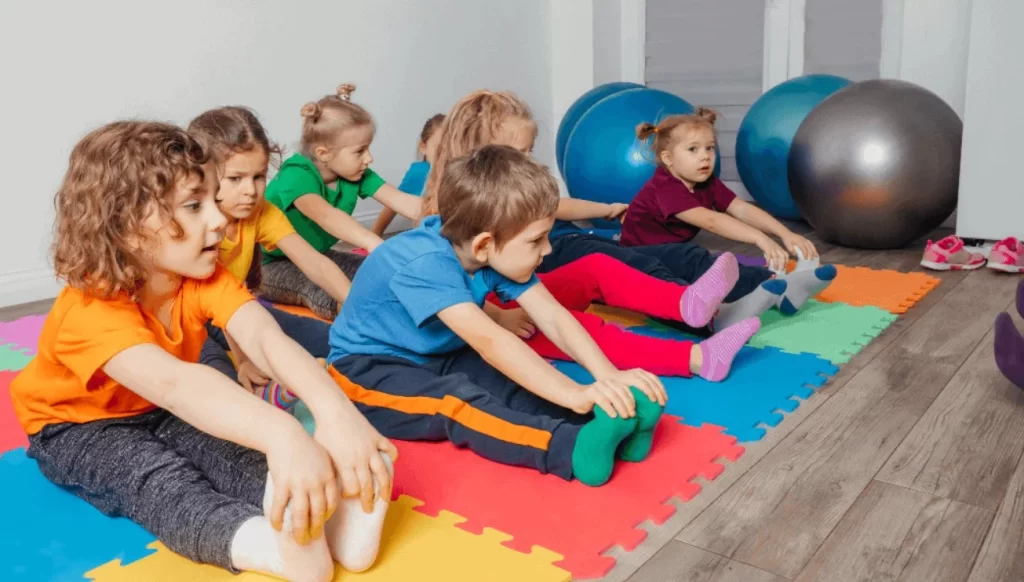
Balance and coordination are at the core of any movement: walking, running, or play; all of the movement activities that many children with autism find difficult due to motor control difficulties and sensory processing problems. They inevitably try to maintain slow and controlled movement to compensate for balance and coordination ability challenges. Therefore, physical therapists focus on exercising these aspects in moving children:
- Exercises: Standing on one leg; walking on balance beam tossing a ball etc.
- Equipment: Balance boards, stability balls, obstacles.
- Benefits: better posture, reduces falls and of course competency in physical activities.
The treatment for balance and coordination emphasizes getting children acquainted with carrying skills for navigating safely and independently.
2. Core Strengthening and Gross Motor Development
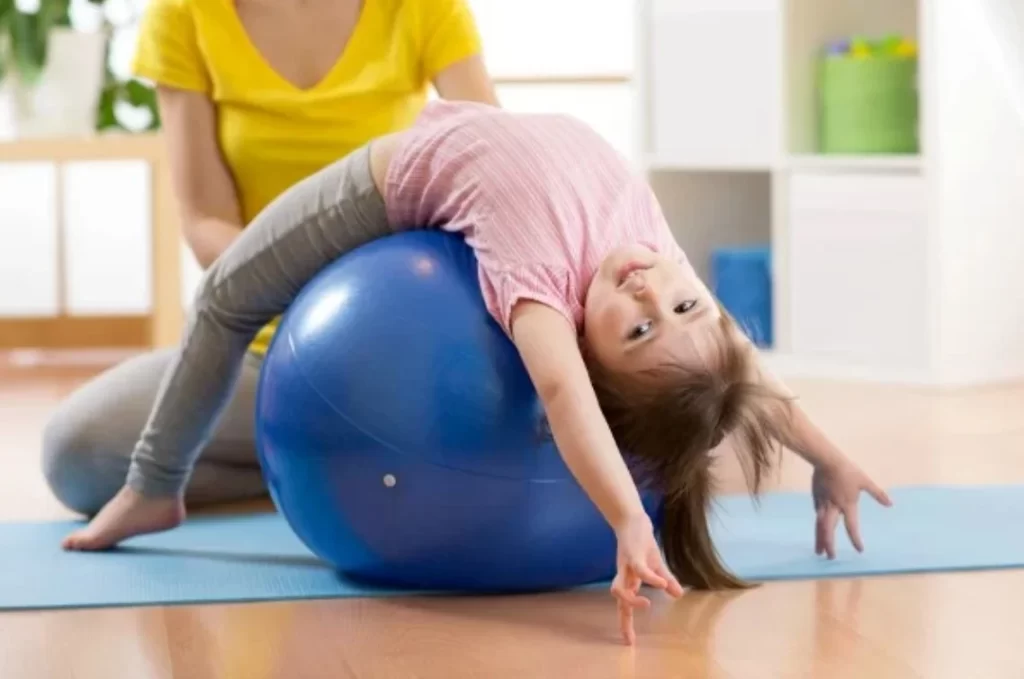
Core is fundamental to the entire gross motor development, as it sustains the spinal column to be erect, keep balance to control gross motor activities (running, jumping, and climbing). Children with autism usually present limitations in core muscle activity, which degenerates their locomotor abilities.
- Exercises: Planks, sit-ups, and bridges… with ball play.
- Activities: Yoga, Pilates, and Resistance training.
- Benefits: Increased muscle strength, better posture & gross motor massification.
Core strengthening exercises are indispensable for promoting physical strength and participating more freely in play and social activities. Check out Outdoor Exercises That Integrate Physical Therapy for Children.
3. Sensory Integration in Physiotherapy
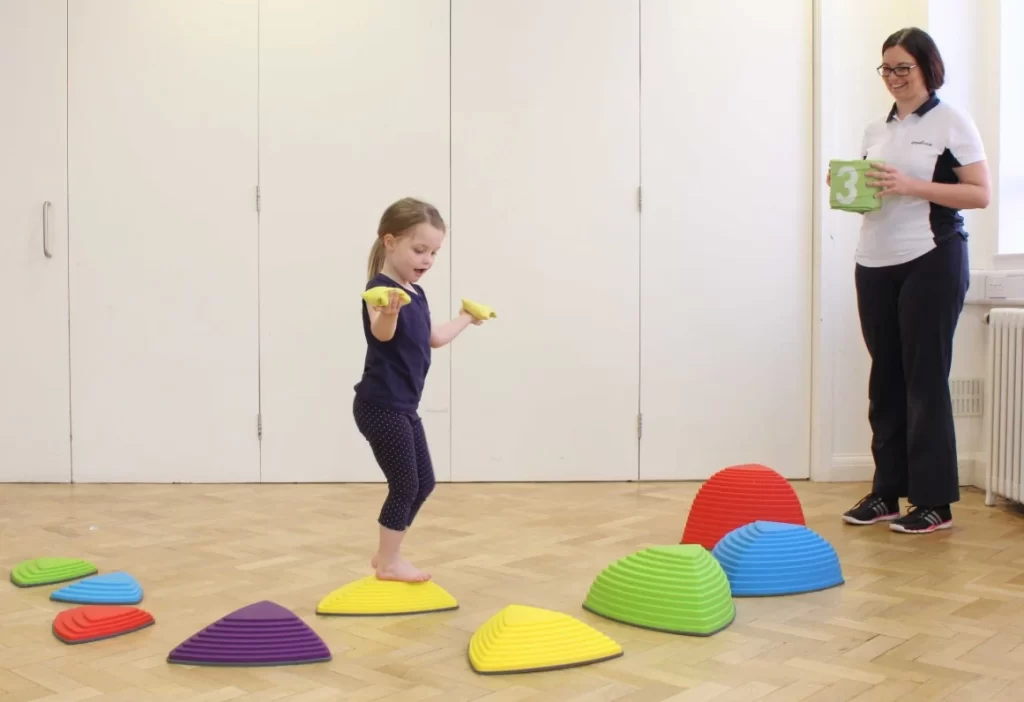
Whatever the case, sensory integration therapy must be included in the physiotherapy plan for children with autism. According to observation, children with some forms of autism tend to have sensory processing problems which can cause them to have an inappropriate overreaction or underreaction to touch, sound or movement.
Repeated practice using sensory integration techniques improves sensory information processing, reducing anxiety and concentrating better.
- Approaches: brushing, swinging, deep pressure massage, and weighted blankets. Activities and therapy include mingling with the sensory bins, playing with the therapy balls, and sport activities such as jumping into a bouncy ball pit or spinning on a vestibular.
- Benefits: Lessened sensitivities to sensory inputs; improved focus; and better emotional regulation.
Sensory challenges can be addressed, while creating a therapeutic atmosphere for the child in which learning and development take place.
4. Gait Training and Mobility Support
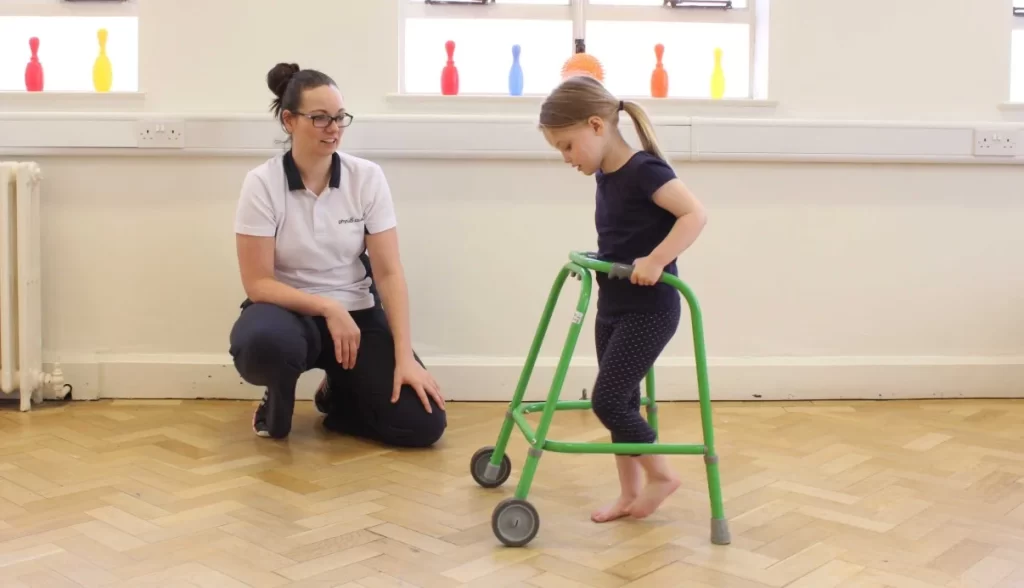
Gait specific training aiming to improve the passenger walking pattern and mobility Some ains with diffiict autism may not walk we have irregular gaits or low muscle tone, coordination problems. That is why physical therapists utilise very specific methods to help kids acquire the walking mechanics.
- Equipment: treadmills, parallel bars, orthotics
- Exercises− Walking heel to toes, obstacle step and stair-climb.
- Milestones: better motion, ease in walking and increased autonomy.
Gait training not only leads better functional skills but increases confidence of the child in his surroundings.
5. Hydrotherapy for Children with Autism
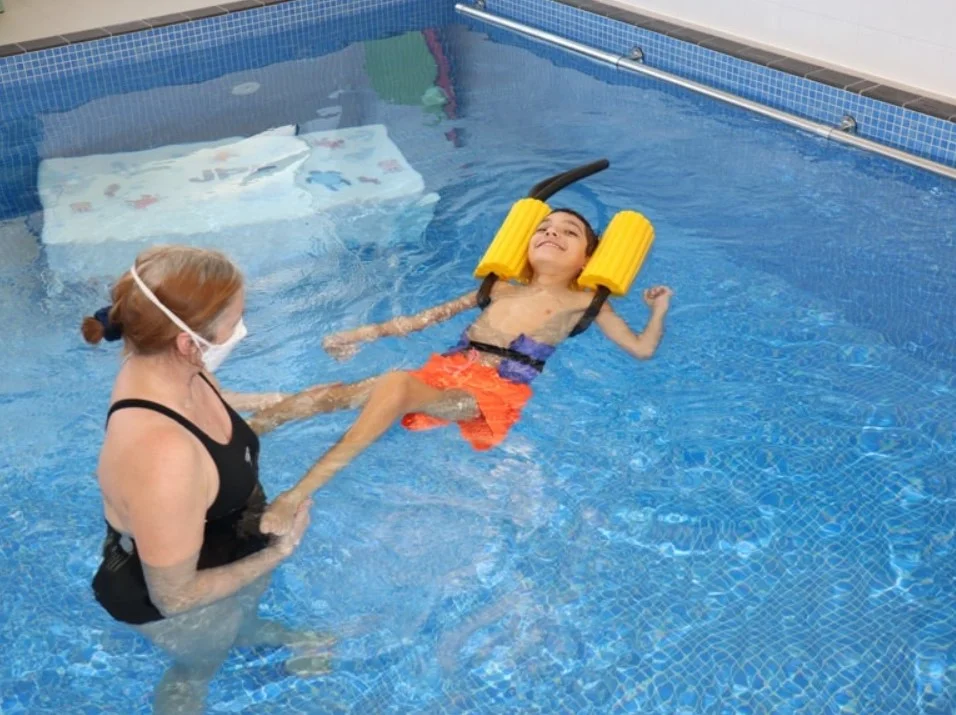
Aquatic therapy or hydrotherapy is simply doing exercises in the water to advance physical development among children. Buoyancy of water means less weight on joints / muscles, perfect place for a child with autism to strengthen and synchronize their movements through waterplay as well.
- Legs: swimming, water aerobics & underwater obstacle courses
- Plus: Toning muscles, improving coordination and decreasing sensory defensive behaviors
- Therapeutic Effects: Water has a very calming effect that helps to lower anxiety and relax.
Hydrotherapy especially for children that are sensory unresponsive or do not benefit from traditional land based exercise.
6. Play-Based Therapy and Functional Movement Activities
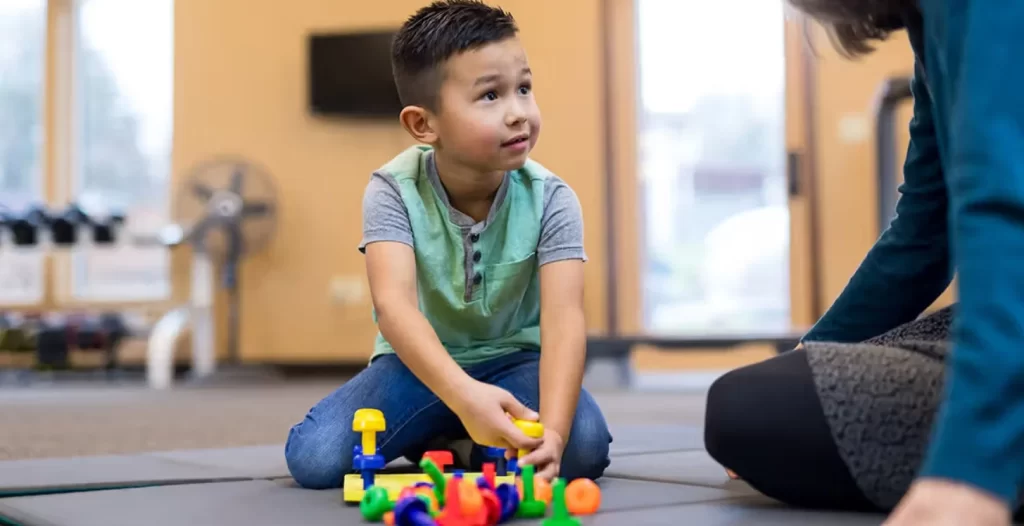
Fun activities of play-based therapy to help develop functional movement skills. This is very useful for children with autism as they stay motivated and interested in therapy through this approach.
- Activities:g. Obstacle courses, dance, ball games & interactive play.
- Resources: Trampolines, swings and other pieces of playground equipment
- Pros – Increased bilateral skills, more socialisation and enjoyment of physical activities.
Enjoys play-based sessions on therapy, which gets the children more involved and ultimately helps meet all developmental milestones.
When to Start Physical Therapy for Autism?
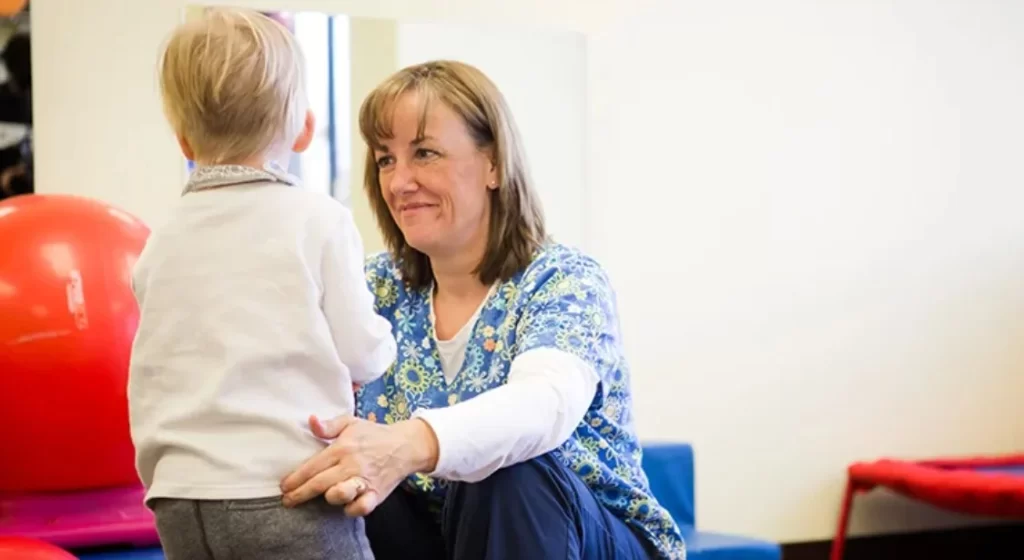
The benefits of physical therapy for autism are maximized when it begins early. The earlier that therapy starts the better for the child. Detailed Process of when to start physical therapy and why
- Prenatal and Infant Signs of Developmental Delays: If your baby has difficulty rolling over, crawling then walking you need an evaluation for possible delays. Early interventions can help to mitigate these delays before they become more severe.
- Autism Spectrum Disorder Diagnosis: Incorporate physical therapy for autism spectrum disorder into the treatment of a child that has been diagnosed with ASD. Many of the kids we work have started therapy as early as 18-24 months.
- Initiation of school readiness in PT — physical therapists can provide a platform to school readiness by improving children motility coordination as well team work in group.
Ongoing dilemmas persist even for children who are already in therapy, issues that persist such as poor balance, low muscle tone and sensory sensitivities can require continued intervention.
Why Start Early?
- Brain Plasticity: Young children have a brain that is ever so plastic, literally meaning that their brains are more open and primed for learning just about everything very fast.
- Avoid Co-morbidities: Primary care can prevent secondary issues such as poor posture, joint dysfunction and social isolation by early therapy.
- Boost self-esteem: Getting kids on the move early makes them feel better in their bodies, often leading to improved social and emotional development as well.
Parents and caregivers are then able to identify the best time to begin physical therapy for autism which can lead your child to the support she needs.
Physical Therapy at Home: Practical Strategies for Parents
Parents are essential to their kids support physical development. Some ways to put these into practice:
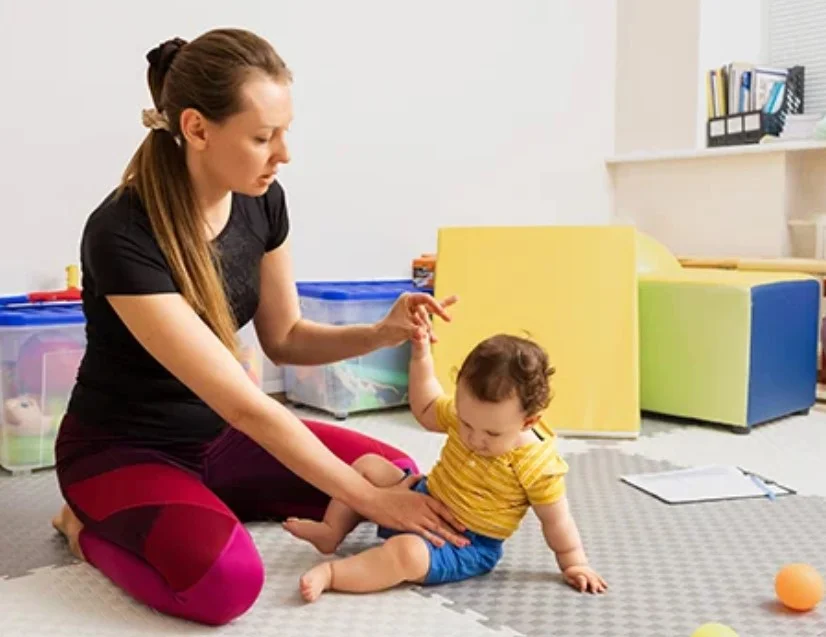
- Engage Play-Based Activities: Games and toys to help with movements coordination.
- Design A Sensory-Safe Space: Avoid sensory overload with the help of dim lighting and places that are less stuffed.
- Do Core Strengthening Activities: Engage in sit ups or yoga to work on muscle strengthening.
- Facilitate Physical Activities on a Daily Basis: Swimming, Dancing or playing in the park are going to help with the motor skills
- Work side by side with the Therapists: Continue working with your childs therapists in order to keep working those techniques from the clinic.
Taking these steps will give parents the chance to guide a child through their therapy and help outcomes of physical therapy for autism be more successful.
Physical therapy for autism is a strong avenue of helping enhance motor skills and physical disabilities associated with children with autism spectrum disorder. Benefits of Physical therapy does wonders from work on balance and coordination as well as sensory integration (the list goes on). With early onset therapy and parenting tools to get those pieces in place, parents can help their child reach success. Whether it be hydrotherapy or play-based activities, core strengthening exercises can be a glimmer of hope and help for families of children living with autism.
FAQs
Physical therapy outcome measures for autism are tools that therapists use in order for them to assess how your child is progressing. Which might consist of standardized assessments, observational appraisals and parental recall. For instance a therapist may use performance in terms of balance, coordination to daily living skills. These measures help to insure the therapy has expected results and is child specific.
Autism physiotherapy Treatments are specific and important to help the motor control difficulties and physical problems that commonly accompany children with autism spectrum disorder (ASD). They enhance balance, coordination, strength and sensory integration so kids can better be involved in their daily life activities. The other part— Physical therapy for autism which supports developmental therapy for autism assistance —encourages social and emotional growth as well increases self-confidence plus independence.
The benefits of physical therapy for autism can be felt not only for a moment but with long term improvements to motor skills from physical therapy. Long term benefit includes:
- Increased independence in self-care
- Enhanced social interaction and readiness for school
- Improved posture, strength, coordination
- Lowered sensory processing and more appropriate emotional regulation.
While beneficial to children with autism, both therapies target different needs:
- Physical Therapy — Gross Factors, Balance; Coordination
- Occupational Therapy– increased fine motor skills, daily living and sensory integration
Two of the therapies that often support one another in need to benefit the kids with ASD.
Physical therapy for autism, while totally focused on motor skills does have the side benefit of improving social skills indirectly. This encourages these children to try group activities and playing with friends and peers. Play-based and group activities lead to opportunities for socialization as well as working together.
How frequent physical therapy for autism is done depends on individual child and goals. Usually the kids go to 1-3 sessions a week. Long term progress is based on consistency and many times the therapist will introduce in-home exercises in addition to their clinic based treatment.

